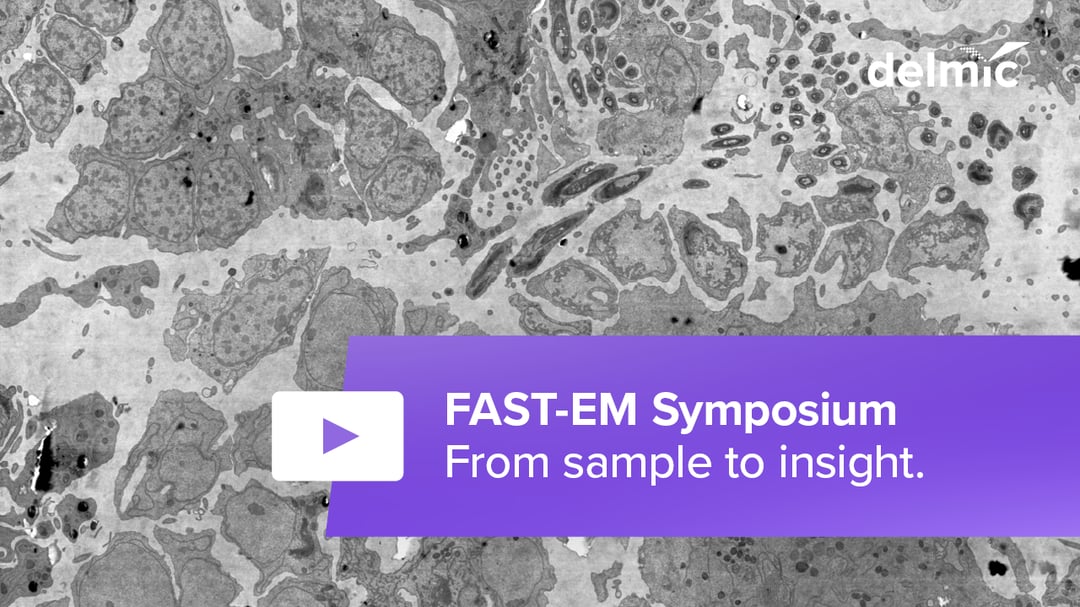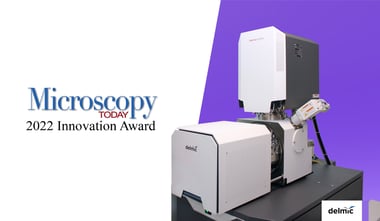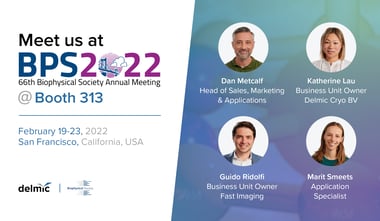The two-day FAST-EM Symposium was held online on 6th and 7th April 2022 by Delmic, discussing the challenges and opportunities for high throughput electron microscopy. Our thanks are extended to all the attendees who supported the event and gave extremely valuable input.
High throughput electron microscopy, in combination with other imaging modalities, will become increasingly important. Hence, the ability to manage and share data will be a must. We were keen for this symposium to be not only a demonstration of FAST-EM system capabilities but also a shared learning event.
If you didn’t have time to attend the event where we dove into the challenges and solutions for high throughput electron microscopy, then here are 12 key takeaways from the days!
1. Interest and usage Volume EM is increasing. Trends analyses suggest that serial sectioning approaches are starting to lead the field in terms of the amount of data that can be obtained.
2. Faster electron microscopy could bridge a gap in multimodal approaches, making it easier to bridge different scales.
3. The general feeling is that ‘more data is better’, both in EM and with new multimodal approaches. More data would allow for broader analyses, more certainty in drawing conclusions, and can even open up new approaches such as ‘time snapshots’
4. We need smarter ways of analyzing and storing data. Scaling up on image data is only as meaningful as suitable automated analysis is available.
5. What to do with raw data is complicated, as the desire to interrogate it with many different types of analyses has to be weighed against the sheer cost and complexity of storing and maintaining it. On top of this, the data quality and automated analysis (machine learning) have to match each other in order to get the best performance.
6. Best practices for newly collected data are not only making it available for sharing but also standardizing annotations.
7. The amount of (phenotypical) variation between samples/individuals is so large that the question of what constitutes a ‘reference database’ requires more work.
8. On top of this, people's clinical EM skills are disappearing as an expert generation is retiring. The question is how this knowledge is best preserved.
9. We want to have more data - after all, images are how this community communicates. At the same time it is incumbent upon the community to connect this to larger societal questions - what does this data solve?
10. FAST-EM is compatible with various high throughput and (semi) automated sample picking techniques, including the Artos 3D from Leica presented in the symposium
11. FAST-EM allows imaging of biological sections at high throughput, with a very simple and intuitive workflow, supporting large 2D imaging and volume imaging.
12. The storage and data platform of FAST-EM allows streaming of the acquired data from the storage unit to various different applications. During the symposium, the team demonstrated how to stream data on a 2D stitching application and subsequently on a 2D image navigation application (CATMAID). The team also showed how to stream EM data directly into a generic application developed in Python. You can connect your own application to the data platform and stream data from the data platform of FAST-EM, at a very high speed, and eliminate the need to transfer very large amounts of data at once.
Would you like to watch our online demos or stay on top of the latest developments and applications of high throughput microscopy? Sign up below and we will make sure to keep you updated!
.png)








